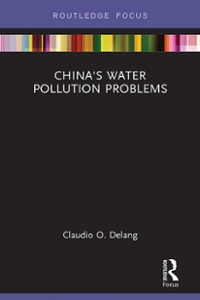Answered step by step
Verified Expert Solution
Question
1 Approved Answer
I understand how to get them but when it comes to computing I always lose my way. Supposed Mark exclusively derives utility from the consumption
I understand how to get them but when it comes to computing I always lose my way.
Supposed Mark exclusively derives utility from the consumption of two goods, namely x1 and x2 with prices p1 and p2 respectively. His utility function is given as U(x1,x2)=(x10.5+x20.5)2. The domain of the function is that x1, x2, p1, p2 > 0.
- Calculate the marginal utility derived from consuming x1and x2. Do these marginal utilities support the assumption of non-satiation?
- Does Mark's consumption preference also indicate that his preferences obey the Law of Diminishing Marginal Utility?Show your solution.
- Obtain the marginal rate of substitution for good 1 and good 2(MRS12).
- Solve for the values of the Marshallian Demand Functions for good 1 and good 2.
- Demonstrate that the Marshallian Demand Functions are homogenous of degree zero in prices and income.
- DemonstratethattheMarshallianDemandFunctionssatisfyWalras' Law.
- Obtain Mark's Indirect Utility FunctionV(p1, p1, m).
- Demonstrate that the Indirect Utility Function is homogenous of degree zero in prices and income.
- Demonstrate that the Indirect Utility Function is strictly increasing inm.
- Demonstrate that the Indirect Utility Function is strictly decreasing inp1.
- Demonstrate that the Indirect Utility Function satisfies Roy's Identity for good 1.
- Using the Indirect Utility Function obtained in 7, derive the expenditure functione(p1, p2, U).
- Usingtheexpenditurefunctione(p1, p2, U), derive the Hicksian Demand Functions for good 1 and good 2 using Shephard's Lemma.
- Verifythatthevalueoftheexpenditurefunctione(p1, p2, U)isequal to zero whenUtakes on the lowest level of utility.
- Demonstratethattheexpenditurefunctionishomogenousofdegree one in prices.
- Demonstratethattheexpenditurefunctione(p1, p2, U)isstrictlyin- creasing inU.
- Demonstratethattheexpenditurefunctione(p1, p2, U)isstrictlyin- creasing inp1.
- How much of good 1 will Mark buy?
- Calculate the uncompensated own-price elasticity of demand for good 1. Is the demand for good 1 price elastic, inelastic or unit elastic?
- Calculate the income elasticity of demand for good 1. Is good 1 normal or inferior? Why? If good 1 is normal, is it a luxury good or a necessity good? Why?
- Calculate the compensated own-price elasticity of demand for good 1. Interpret this result. Compare this to your answer in part 19 and explain the difference.
- Demonstrate that the Marshallian Demand Functions satisfy Cournot Aggregation.
- Demonstrate that the Marshallian Demand Functions satisfy Engel Aggregation. Suppose the price of good 1 increases by $5.
- Given this price increase, calculate the Total Effect, Substitution Effect and Income Effect using the (Discrete) Slutsky equation.
- Calculate the compensating variation for the increase in p1.
- Calculate the equivalent variation for the increase in p1.
- Find the equation of the Marshallian demand curve for good 1 given that the price of good 2 is $10 and his income is $200. Based on this equation, calculate the change in his Marshallian consumer surplus due to the increase in p1.
Step by Step Solution
There are 3 Steps involved in it
Step: 1

Get Instant Access to Expert-Tailored Solutions
See step-by-step solutions with expert insights and AI powered tools for academic success
Step: 2

Step: 3

Ace Your Homework with AI
Get the answers you need in no time with our AI-driven, step-by-step assistance
Get Started


